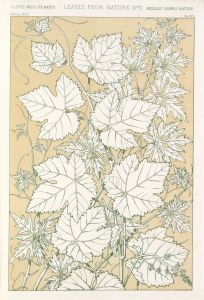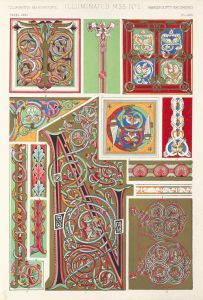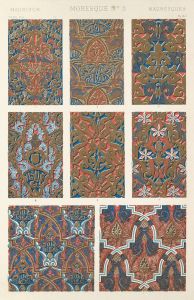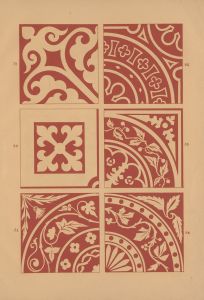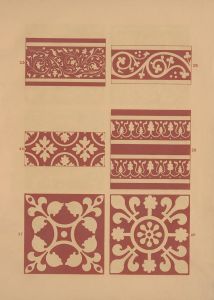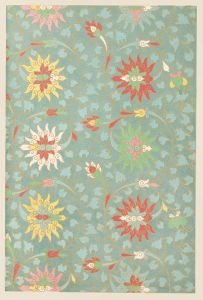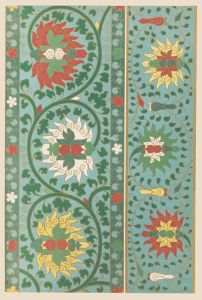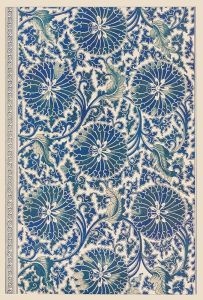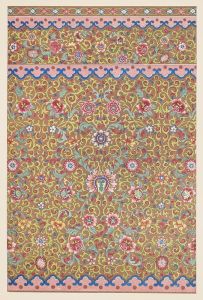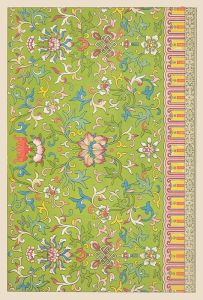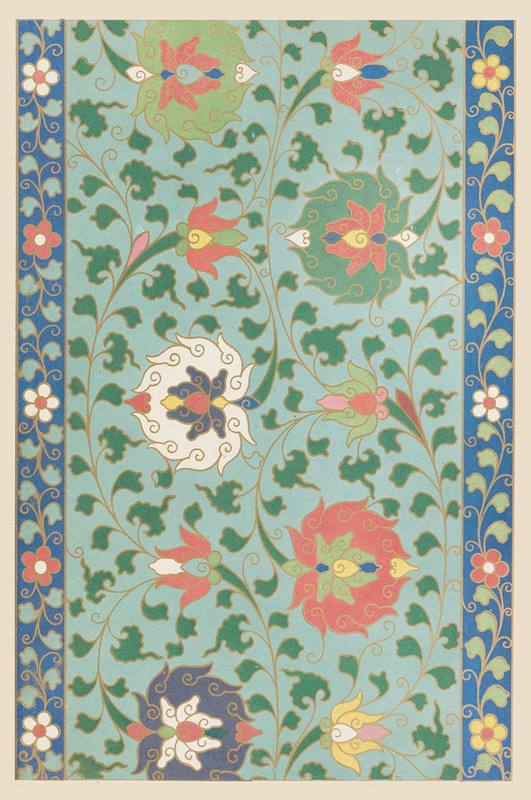
Examples of Chinese ornament, Pl.07
A hand-painted replica of Owen Jones’s masterpiece Examples of Chinese ornament, Pl.07, meticulously crafted by professional artists to capture the true essence of the original. Each piece is created with museum-quality canvas and rare mineral pigments, carefully painted by experienced artists with delicate brushstrokes and rich, layered colors to perfectly recreate the texture of the original artwork. Unlike machine-printed reproductions, this hand-painted version brings the painting to life, infused with the artist’s emotions and skill in every stroke. Whether for personal collection or home decoration, it instantly elevates the artistic atmosphere of any space.
"Examples of Chinese Ornament, Pl.07" is a design plate created by Owen Jones, a prominent British architect and designer of the 19th century. This plate is part of his influential work The Grammar of Ornament, first published in 1856. The book is a comprehensive collection of decorative patterns and motifs from various cultures around the world, intended to serve as a reference and inspiration for designers, architects, and artists.
Owen Jones was deeply interested in the principles of design and ornamentation, and he sought to document and analyze the aesthetic traditions of different civilizations. In The Grammar of Ornament, he included examples from cultures such as Egyptian, Greek, Roman, Persian, Indian, and Chinese, among others. Plate 07 specifically focuses on Chinese ornamentation, showcasing patterns and motifs that reflect the artistic traditions of China.
The designs in Plate 07 are characterized by their intricate details, symmetry, and use of geometric and floral patterns. These elements are hallmarks of traditional Chinese decorative art, which often emphasizes harmony, balance, and symbolism. The motifs may include stylized representations of natural elements such as flowers, leaves, and clouds, as well as abstract geometric forms. Such designs were commonly used in Chinese architecture, textiles, ceramics, and other forms of decorative art.
Jones's work was groundbreaking for its time, as it sought to promote the study and appreciation of non-Western art and design. By including Chinese ornamentation in his book, he contributed to a broader understanding of the richness and diversity of global artistic traditions. His approach was also rooted in his belief that design should be informed by universal principles, which he sought to illustrate through the patterns and motifs in The Grammar of Ornament.
While Jones's depictions of Chinese ornamentation were based on his observations and studies, it is important to note that his interpretations were filtered through a 19th-century European perspective. As such, the designs in Plate 07 may not fully capture the cultural and historical context of the original Chinese artworks they were inspired by. Nevertheless, the plate remains a valuable resource for understanding how Chinese decorative art was perceived and studied in the Victorian era.
Today, The Grammar of Ornament and its plates, including Plate 07, are regarded as significant contributions to the fields of design and art history. They continue to be studied and referenced by scholars, designers, and enthusiasts interested in the history of ornamentation and cross-cultural artistic exchange.





